1909-1918
Buyer – Fred Harvey Indian Stores
Albuquerque
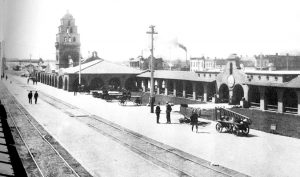
In 1909, Horace learned that the Fred Harvey Company needed a buyer and manager for their Indian Stores located in Santa Fe Railroad stations across the southwest. They hired him. He rented a room in the YMCA located across the street from the Albuquerque Railway Station. Their new Fred Harvey Indian Store was next to the Fred Harvey Restaurant.
The Harvey Girls

Starting in 1876, a decade before Horace’s birth, an entrepreneur named Fred Harvey opened a railway lunchroom in Topeka, Kansas that grew into an industry providing Western Hospitality to travelers. A century ago, Fred Harvey was a household name, noted for high quality food served pleasantly in railway stations and dining cars. Today in the 21st century there is one remaining Harvey Restaurant at Grand Canyon in the El Tovar Hotel, pictured here in 1900.
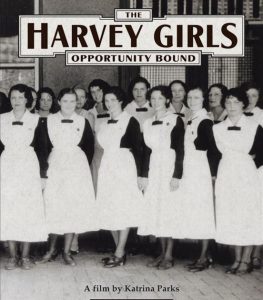
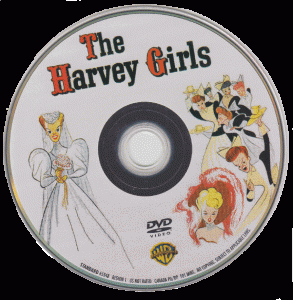
In 1883 at Raton NM, Fred gave birth to the “Harvey Girl” as a way to employ the high energy and attractive appearance of young women to wait on his customers. During the next half century, Fred’s concept opened the door for 100,000 women to leave the farms and villages and find their first employment. They wore Harvey Girls Uniforms and lived in chaperoned housing with strict rules. Their endless stories are part of the fabric of the Women’s Movement in America. One fictional story became a full-length movie in 1946 starring Judy Garland and Angela Lansbury, simply called “The Harvey Girls” and is available for viewing online or by purchasing a DVD. Click here for a two minute trailer.
The Harvey Indian Curio Stores
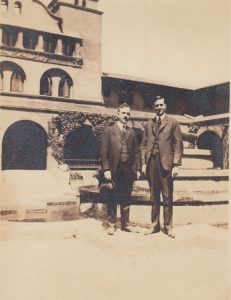
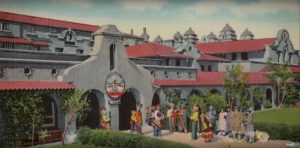
Fred Harvey died in 1901 and his son Ford Harvey decided to add an Indian Museum and Curio Shop next door to the restaurants in several of the largest stations. Travelers usually had a 30 minute stop over while the steam engines were refueled with water and coal. The highly trained Harvey Girls served a delicious hot meal and got the passengers back aboard on time. It was into this world that 21 year old Horace Salmon emerged. We family members oft wonder what it may have been like for this handsome young immigrant from Antigua to be surrounded daily by that staff of attractive young women.
Skilled Weavers, Basketmakers & Silversmiths in the Store

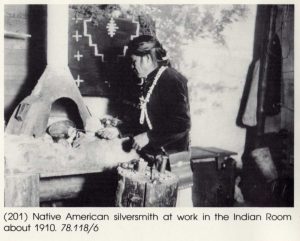
But many didn’t want a meal, but did get off to stretch their legs. So he created these unique shops to satisfy the curiosity of visitors from other parts of the world about the Pueblo, Navajo and Apache Indians, and to offer products made only in the West. In order to keep people coming back, Harvey hired craftsmen to make jewelry right there in the store where people could watch and ask questions. This provided employment to dozens of men, and some stayed on for decades like Tom Torlino. The Harvey Curio Rooms in 1910 are described in a 1930’s history book at the Albuquerque Library showing photos of the actual store that Horace managed.
Bringing Family Members to America


During his years in Chicago and Albuquerque, Horace used his financial resources to bring the family to America. He had helped Ella move to Chicago in 1906 and then in 1909, two months after arriving in Albuquerque, Horace got word of the death of his dad. James Francis Nelson Salmon, died on September 21, 1909 in St. Johns. He was 67 years old. Frank had struggled for several years with pulmonary illness, a result in part of smoking the tobacco he had grown throughout a lifetime. There was no way Horace could afford a steamship journey to Antigua. His Dad was buried in the church yard of St. Johns Cathedral. There was no Skype face-to-face transmissions. No telephone “live” conversations. There was no Facebook, texting, fax or email written-messages. So the best Horace could do was to express his grief and deep sadness to his Mother and family in a hand written letter that would take several weeks to arrive.
Horace’s mother, then age 55 was dependent on her children, Ella and Horace in America. The Antiguan household included Horace’s younger sister Hilda (16), younger brother Charlie (age 14) and Alice’s senile mother, Maria A. Lake, then 81.
Ella Married Joe Kelly in El Paso

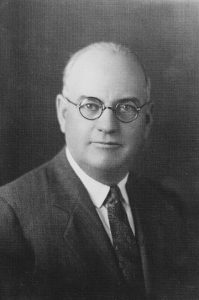
Ella had come west with Horace to Albuquerque, found and married Joseph Alois Kelly on June 29, 1915 in El Paso TX. They wanted a Catholic wedding (Joe’s faith) but was denied it by the priest due to Ella’s protestant faith. She had grown up in Antigua in the Church of England, called “Episcopalian” in America today. The newly weds decided to honeymoon in Denver and visited the Garden of the Gods Park in Colorado Springs.

A year went by and the grandmother, Maria Lake, died on July 1, 1916 in St. Johns at age 88. Alice’s youngest, Charlie Salmon, then age 22, enlisted in the British Army and left for boot camp in England and eventually fought in the trenches of Belgium. Back in the USA that same month, Ella and Joe bore their first child in El Paso, named Joseph Alois Kelly, Jr.
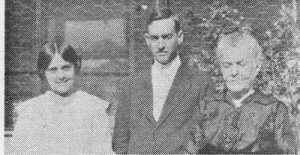
By 1917 Alice Salmon was left in Antigua with only Hilda (then 23) at home. Her entire family-of-origin was gone. On June 14, 1917, visas were granted for Alice and Hilda to move to Albuquerque and Horace rented a tiny two bedroom house for them at 608 South 2nd Street.
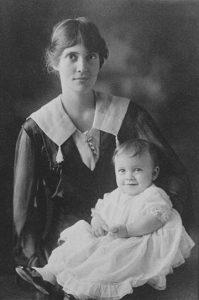
A postcard has survived dated October 7, 1917 from Horace to his mother in Albuquerque, written in El Paso during one of his frequent business trips that reads: “Arrived O.K. and was out to see Ella & Joe. The youngster has a little touch of whooping cough. I will write you later as have been quite busy. Love to Hilda & Self. Yrs. Horace.” A month later in November 1917 Ella’s little boy died at age 16 months. What they had thought was whooping cough and other bronchial diagnoses, was actually formaldehyde poisoning from the milk being sold in El Paso that year. Afterwards, Ella took Catholic instruction and found consolation by becoming a Roman Catholic.
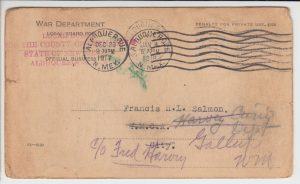
Drafted
On August 22, 1917 the Albuquerque Draft Board mailed to Francis H. L. Salem (Salmon) a Call to Appear for Physical Examination on August 28, 1917 at 9:00am. He was assigned Serial No. 1932 under Order No. 441. On December 29, 1917 they sent a postcard with Notice of Classification to him at the YMCA. Apparently Horace was away at the time and the card was forwarded by mail to the “Harvey Curio Dept” (across the street), and they in turn added a forwarding address of “Fred Harvey, Gallup NM” time stamped Jan 4, 1918 at 6:20PM. The card said he had been classified as Class 3 (out of five classes) and within a short time he was reporting for Basic Training at Camp Funston, Kansas.
The war in Europe desperately needed fresh troops from America. Businesses were required by law to release their employees to serve. After the war he could depend on The Harvey Company to give him back his job. But wars have a way of changing people and afterwards Horace chose to go to New York City and live with his family. That story will be told in a chapter called 1919 – Rug Sales, New York City. Right now the story goes to his experiences in the U. S. Army in France as told in the next chapter.